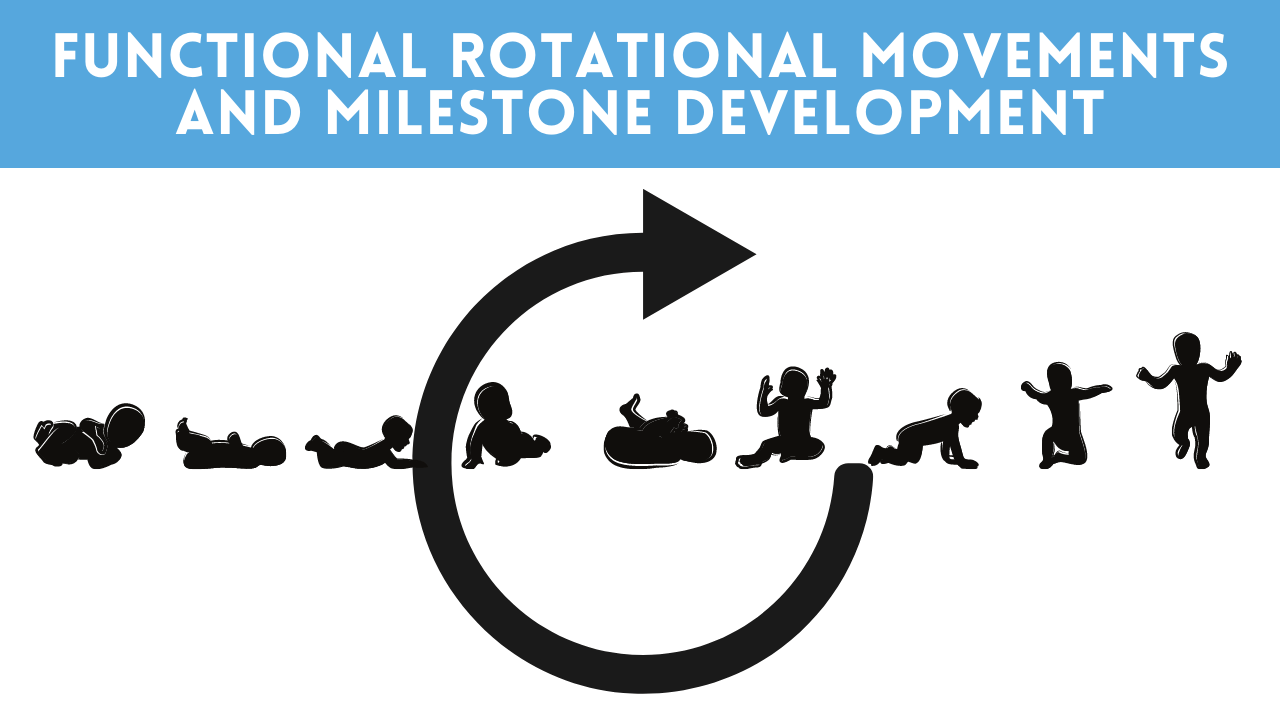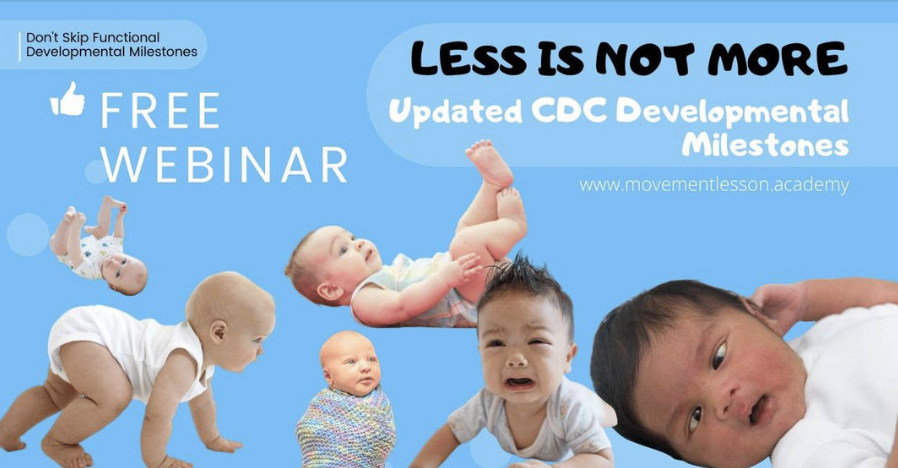Functional Rotational Movements and Milestone Development

Rotation and Movement
Milestone development is not based on strength but one's ability to rotate in and through what seems like invisible space around us, but really it's gravity and the interaction our body has with gravity.
For a child what makes the stepping stone of milestone development possible is the child’s ability to successfully move in and out of each milestone independently using rotational movements.
Now I keep saying rotation.
Because, yes, you can work on muscle strengthening so a child can muscle through movements, but eventually the child will reach a point where they can’t muscle through anymore because their body is too heavy and gravity has become too much to work against.
It has nothing to do with strength.
Which is counterintuitive.
We think we just need to build more strength but movement shouldn’t take work and when it does we don’t want to do it anymore.
When you focus on putting rotation back into the system, a child will naturally appear stronger because it takes more than muscles to work fluidly through gravity.
You need, rotation, balance and counterbalance responses, and weight transfer to successfully interact with and move through gravity.
Again, rotation is what a body naturally uses to move through space and gravity with more ease.
Lack of Rotation and Developmental Movement Delays
In delayed children, we really see that their body has a hard time initiating this natural rotational movement and there are a few outcomes.
1.
The rotation in the body is never initiated so the child has to work their entire life just to move and it takes a lot of energy so they have less to focus on their skills like communication, language skills, and so on.
2.
Some of these rotational movements are initiated as we literally have to teach a child skills by putting their hands in ours and we naturally teach the rotational skill set that allows a person to eventually to the movement on their own if that is enough rotational input for their system.
Examples of teaching rotational skills sets would be like the rotation that happens in the wrist and arm when we bring a spoon to our mouth or a piece of food and picking up and playing with a toy.
3.
Yes, this is done with all kids to an extent, but when a child lacks rotational movements we have to do this for a long time until they get it, or indefinitely, because their body still can’t initiate the self-rotation needed to do the skill on their own.
When it gets to this point rotation has to be initiated in their body a different way.
The only way this can be done is with gentle rotational touch and specific rotational exercises that let the body experience a specific movement process.
With this last option, it's a little bit of a learning curve to learn this skill, but so worth it and anyone can do it.
Even you.
Get started with a 14-day free trial where you can start learning more about rotational movements and what that means for a child's development and movement. CLICK HERE
Don't want to join but you are interested in learning about the rotational milestones a child experience as they grow. Watch our FREE webinar on what missing in the CDC developmental milestones and what that means for your ability to monitor and be proactive about your child's functional development. CLICK HERE

